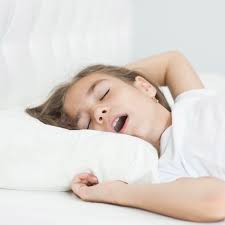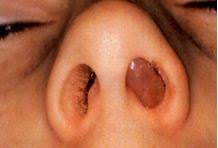 Sleep disordered breathing(SDB) is a common problem in children.
Sleep disordered breathing(SDB) is a common problem in children.
It has been ignored for years till there has been a facility to diagnose it.
Now,there is a facility for early detection of this common problem by a test called polysomnography.
Enlargement of tonsils and adenoid are the main cause of this disorder in children
The main cause of enlargement of tonsil and adenoids for a prolonged period of time is ALLERGY.
Parents are usually not aware of this problem in their children.
The common symptom is snoring in child with frequent disturbances of sleep.
It is graded by hypoapnea/apnea index(HPI) on polysomnography.
The child gradually develops behavioral changes,attention deficit,cognitive problems,day time sleepiness and later on hypertension.
There are two modes of treatment ,one is watchful observation and second is removal of tonsil.
Study was done on 458 children of the mean age of 6 years.
At the end of 12 months of follow up 394(86%),children were available.
It was observed that there was no significant difference between the two groups for the cognitive function.
There was a significant improvement in day time sleepiness and behavioral problems in the group who underwent adenotonsillectomy(surgical removal of adenoid and tonsil) ,moreover,the quality of life were better in the group who opted for the surgical removal of adenoid and tonsil.
CONCLUSION: In case of mild sleep disorderd breathing ,adenotonsillectomy is not advisable for improvement in attention deficit or cognitive problem.
REFERENCES:
Tonsil, adenoid removal improved sleep quality, some behavioral problems in children with mild sleep apnea. https://www.newswise.com/articles/tonsil-adenoid-removal-improved-sleep-quality-some-behavioral-problems-in-children-with-mild-sleep-apnea. Published Dec. 5, 2023. Accessed Dec. 5, 2023.
 Nasal polyp is not uncommon in children and parents often get afraid of it when it is visible.
Nasal polyp is not uncommon in children and parents often get afraid of it when it is visible.